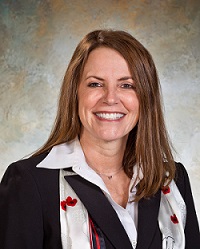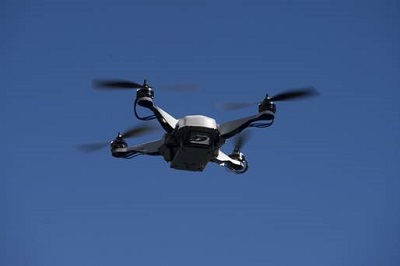Can Associations Keep Pace in the Tech Race?

After five years, the answer is clear—the more things change, the more things change. But don’t let us drone on.
To paraphrase management guru Stephen Covey, “People are so busy sawing, they tell me they don’t have time to sharpen the saw.” But if you don’t take a time out to sharpen your mental saw once in a while, your mental blades get dull and burn out more easily.
So let’s take a few minutes to sharpen the saw.
It’s hard to believe, but this month marks our fifth anniversary of publishing Association Adviser. In 2010, we started as a simple monthly e-newsletter to help our parent company Naylor, LLC, stay in touch with its clients and hot prospects. The Dow Jones Industrial Average hovered around 10,600. Usher’s “OMG” and Lady Gaga’s “Telephone” were topping the pop music charts. The U.S. unemployment rate was a frightening 9.9 percent, and tiny Butler University was starting its improbable run to the finals of the NCAA Men’s Division I basketball tournament.
Since then, Butler has remained a national class basketball program, the jobless rate has nearly halved and Association Adviser has steadily morphed into a comprehensive digital media platform that includes the AssocationAdviser.com website, the streaming video platform AA-TV, the Association Executive Roundtable online forum, the monthly webinar series and the annual Association Adviser magazine. And since 2011, we’ve produced the annual Association Communication Benchmarking report, in which more than 1,000 executives and one dozen state societies of association executives take part.
Experts say we’ve moved from the Internet to an “Internet of Things.”
Marketing automation handles repetitive member communication tasks and enables associations to market to members more selectively and on multiple channels.
Associations are increasingly giving IT leaders a seat at the table to participate in their business and strategy decisions.
Staying current in this age of “throw-away technology” is a huge challenge for every NFP organization.
We’re now reaching nearly 10,000 of your colleagues each month in 110 industries throughout North America. Thanks again. We couldn’t have done it without you.
As Covey would argue, sharpening the saw is about renewing yourself and your team physically, mentally, spiritually and emotionally. To that end, we’re launching a series of five-year retrospectives and kicking it off this month with a special focus on association technology. Has anything changed more dramatically over the past five years? Is anything likely to change more dramatically over the next five years? Our readers don’t think so. About 60 percent of respondents to our latest unscientific reader poll said they’ve encountered more surprises in technology over the past 12 months than in any other area of association management. That includes membership growth, non-dues revenue, social media and Big Data.
IT gets a seat at the table

Associations are generally not early adopters of technology, but they are taking steps to close the knowledge gap. According to Fara Francis, chief information officer of The Associated General Contractors of America (AGC), association leadership now welcomes IT to sit at the table to participate in identifying the organization’s business strategy and goals. “With this posture, technology is now given significant consideration in most associations and as such, a plethora of technology trends are now being adopted and implemented,” she added.
Staying current in this age of “throw-away technology” is a huge challenge for every NFP organization she’s involved with, said Patti Stirk, a long-time IT services entrepreneur and now an investor and adviser to AgeCheq, which creates technology to protect children’s online privacy. AgeCheq also helps app publishers and ad networks comply with the Children’s Online Privacy & Protection Act (OPPA).
“Not staying current with electronic payment methods and communication methods risks disenfranchising donors,” she said. “It’s no longer simply about email and a Web page. As we all know, that donor relationship is next in line to serving the NFP’s primary constituency,” added Stirk, who lends her voice to the AgeCheq website and her time to a variety of NFPs in the southeastern Pennsylvania area.
Mobile
Members of all ages, not just up-and-comers, are likely interacting with you via a mobile device. That wasn’t always the case five years ago. According to Naylor’s Chief Innovation Officer, Marcus Underwood, as the typical screen size has grown rapidly, so has the way in which people use their devices. “In the past, messaging and searching for quick answers (through search engines) dominated the usage. Larger screen sizes have led to increased consumption of in-depth content,” Underwood said.
“The types of content (articles, video, blogs) allow associations to communicate with their members in ways never before possible. This larger screen size has also freed up space that can be used for advertising or sponsorship. This is key for many associations as the non-dues revenue model is often necessary to pay for these new content streams,” added Underwood.
That’s also why designing your sites with responsive design—the ability to experience optimal viewing of a website from any source: web, phone or tablet—is “now mandatory,” explained AGC’s Francis. As David Trust, CEO of the Professional Photographers Association observed, “Trying to do business without tapping into all of the ways people communicate these days is like trying to hold back the tide with a sandcastle.”
Of course, no discussion about mobile technology would be complete without a nod to the explosion of mobile apps. Nearly half (42%) of respondents to our unscientific reader poll said mobile apps have had a bigger impact on their association than any other factor. No other tech development came close.
Underwood said gamification is one way that associations have rapidly boosted engagement with their mobile apps. And he said you can now make your content mobile accessible without having to rely on native applications that must be managed through a third party.
“Making your content mobile web-friendly is far more cost-effective, and it doesn’t require specific downloads,” Underwood said. “The vast majority of ways an association needs to communicate with its customers can be done through smart, adaptive mobile web design.”
See 5-Minute Mobile Update for more mobile insights from Marcus Underwood
Marketing Automation
Another important trend we’ve seen is the number of associations now using marketing automation platforms (MAPs) to automate repetitive member communication tasks. MAPs also enable you to market to members selectively and with more relevance on multiple channels, including email, social media, websites and more. Chad Lloyd, marketing manager of Boxwood Career Solutions, said MAPs help associations connect to members at the “appropriate time” and on a “personal level” so that your communications seem as though they were created just for that one single member.
Whether built in-house or more often licensed from vendors, such as Eloqua, Hubspot, Marketo, Callidus Cloud and others, MAPs use “digital body language tracking,” so you are able to understand exactly what your members and prospective members are interested in and customize your communications with them,” Lloyd added. That, he said has gone a long way toward helping associations avoid two of the biggest member long-time member irritants: (a) Marketing to folks who aren’t interested in what you are sharing and (b) burning your list by over-communicating with your contacts and causing them to opt out of your communications.
Brianna Lawson, an online marketing specialist at Naylor Association Solutions, has more about marketing automation in today’s issue.
Data/AMS
According to Naylor’s Underwood, “The field of data analytics has exploded in recent years, as the growth of online communication channels has made it possible to track and measure more behavior than ever before. Organizing that data in an actionable and intelligent way would be virtually impossible without marketing automation software. Our associations’ ability to communicate to the right people with the right message is the key to member acquisition and retention.”
AGC’s Francis agreed, noting that dashboard technology has evolved into very innovative methods to slice and dice data to allow for more keen strategic decision making. “In addition to dashboards, associations are now utilizing customer relationship management (CRM) platforms in addition to the traditional association management software (AMS) in an effort to collect greater data elements on member and non-member records,” she added.
Brian Choate, president and CEO of Timberlake AMS Solutions, said you can’t underestimate the importance of centralizing all of your data so it can be more accurate for mailings and internal reporting. Web-based centralized data can also be more easily updated by members (by themselves) and more easily monetized as an online directory (with enhanced listings and sponsorships) or as a conduit for online donations. Choate said his organization continues to migrate member data from spreadsheets, file cards, notebooks and other archaic systems that are all too common in the association world. A well-functioning AMS will allow you to understand your members more deeply and how they engage with your association, he said.
The biggest change Choate has seen over the past five years is the degree to which associations have truly adopted cloud-based solutions for storing their data.
AGC’s Francis agreed. “Associations recognize the cost savings both financial and physical of using the cloud for storage and data access. Cloud-based servers provide scalability and that is good for businesses with virtual workers,” she added.
Aerial photography/Augmented reality
According to AGC’s Francis, “drones,” short-hand for Unmanned Aircraft Systems (UAS), have been rapidly adopted over the past two years not only by hobbyists, but by for-profit and NFP organizations to show aerial views of landscapes, commercial and residential properties, construction job sites, waterways and even live events. Talk about ways to bring your content to life and capture the attention of younger members of the profession! Francis said several AGC construction company members have successfully used drones on job sites for optimal aerial viewing, and Constructor—its flagship member magazine—will start featuring aerial photography shot this way.

As a leading construction industry association, AGC is closely monitoring FAA rulings about the use of drones in the commercial space and how they impact the construction industry. The Association for Unmanned Vehicle Systems International, a coalition of 700 individuals and 600 corporations, estimates that drone-related business activities will create 100,000 new jobs by 2025 with an economic impact of $82 billion over that period.
Bill Pritchett, director of education for the 175,000-member Academy of Model Aeronautics, told me last week that the rapid adoption of “quadcopters,” technically known as small Unmanned Aircraft Systems (sUAS), has certainly boosted membership, but it has also caused the organization to alter its membership application and categories.
AMA’s primary mission however is to protect members and promote safe flying. The rules and regulations governing unmanned aircraft are changing almost daily. Before you go out to wow your members with stunning aerial visuals, make sure you check the local, state and federal regulations, and make sure you have spotters on the ground since drones can be flown aware from the operator’s line of sight and can go AWOL if they lose GPS contact.
Internet of Things
Finally, our experts remarked about the remarkable shift they’ve seen from talking about the Internet to talking about the “Internet of Things” (IoT). That’s the notion that everyday physical objects can be connected to the Web and then made identifiable to other devices, said Francis.
Another way to view IoT, said Stirk, is to think not only about your “smart refrigerator,” which has sensors monitoring your food inventory levels, but actual food items with sensors that have been monitored throughout the manufacturing, shipping, inventory and consumption process.
Gary Klaben, a Chicago-based financial adviser who counsels individuals and organizations about charitable giving, said you have smart thermostats, you have remote monitoring of heart devices, you have frequency ID tags (RFID) within common household elements that then can be networked together to give you information. This is really going to explode significantly in the next three to five years.”
Conclusion
According to the good folks at Hallmark, it customary to give something made of wood on your fifth anniversary. We’ll come up with something in the workshop. But in the meantime, don’t forget to take a break from your sawing.
Hank Berkowitz is the moderator in chief of Association Adviser eNews.

